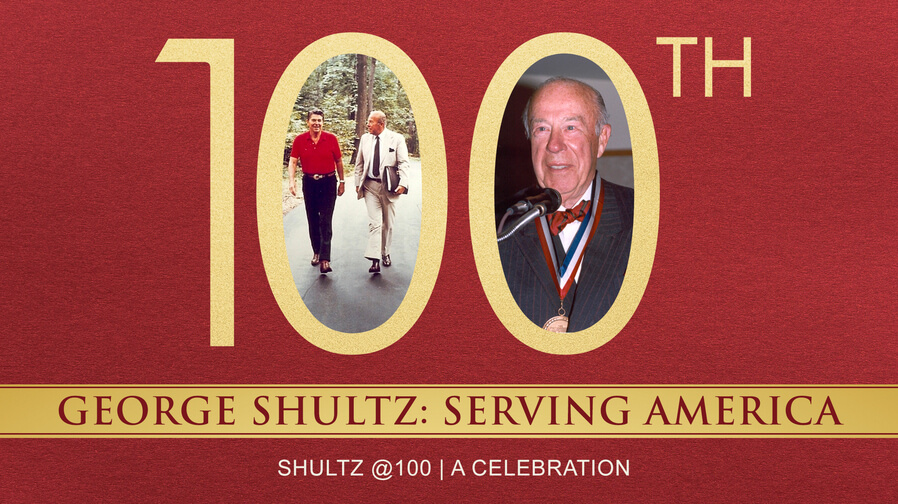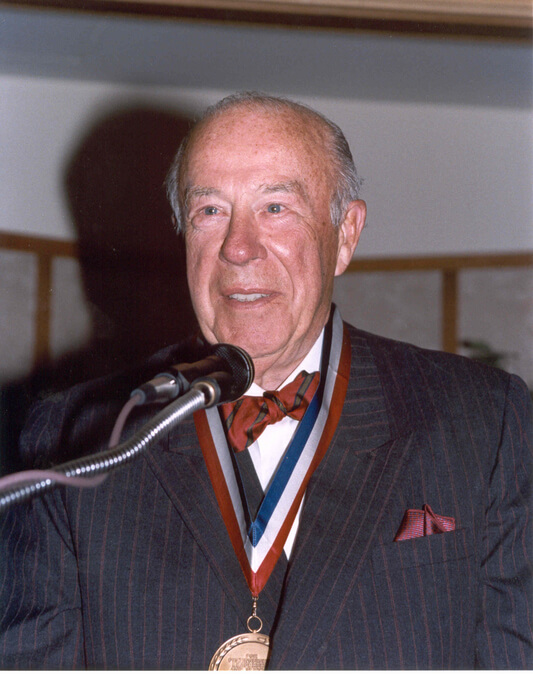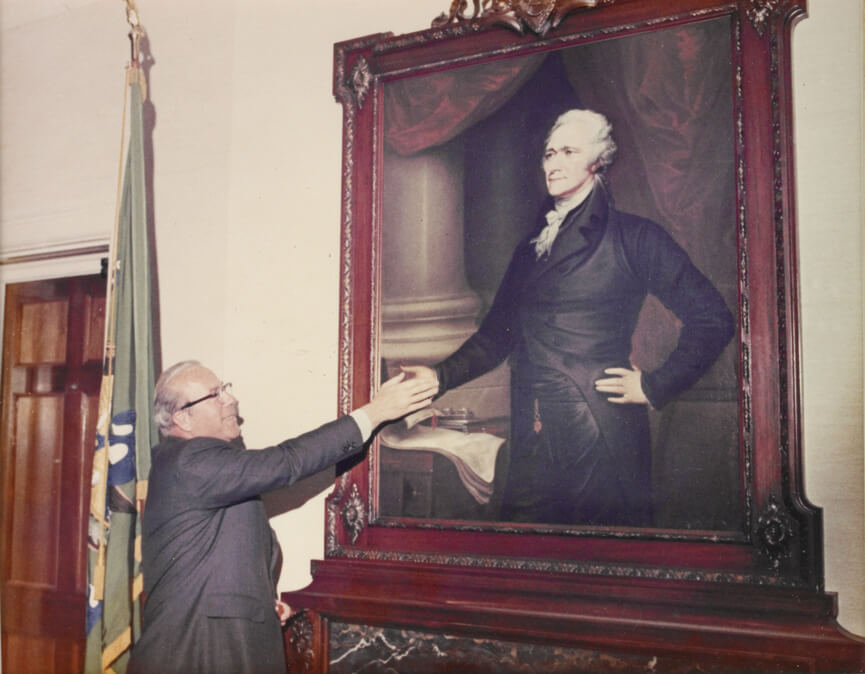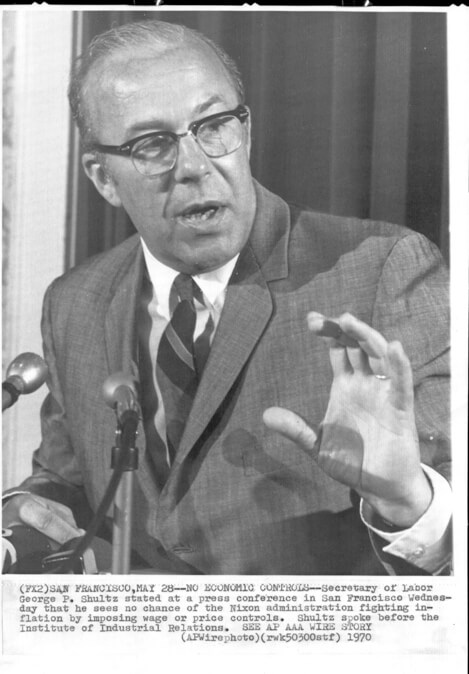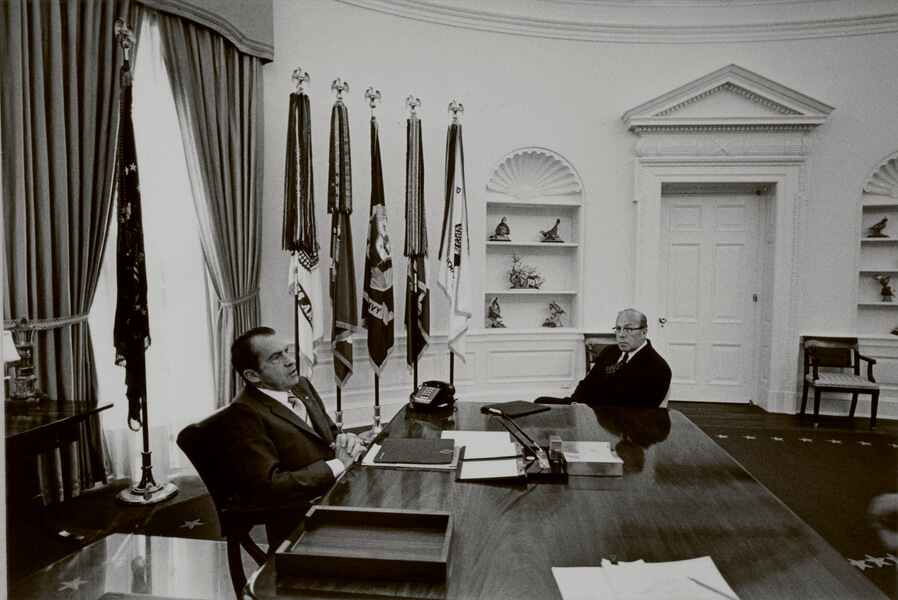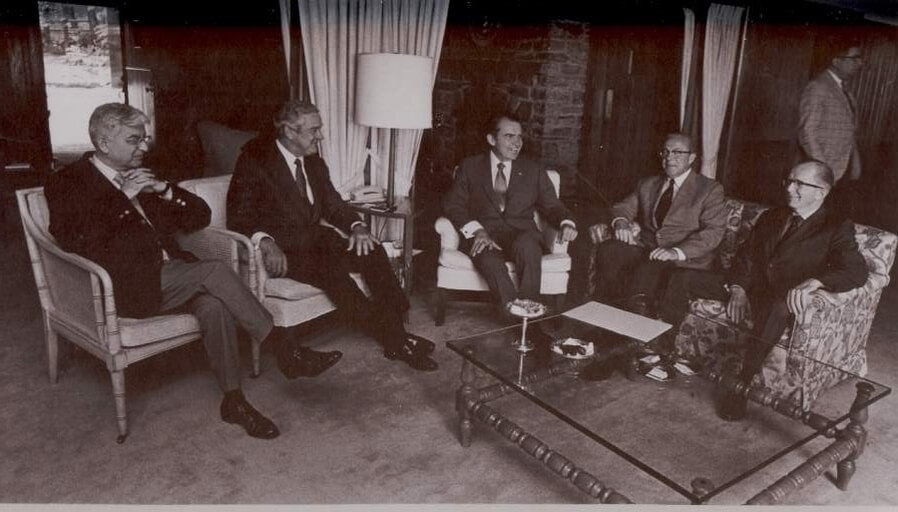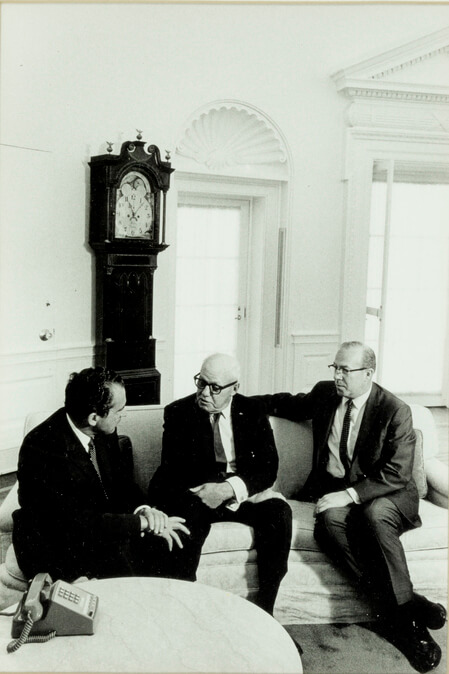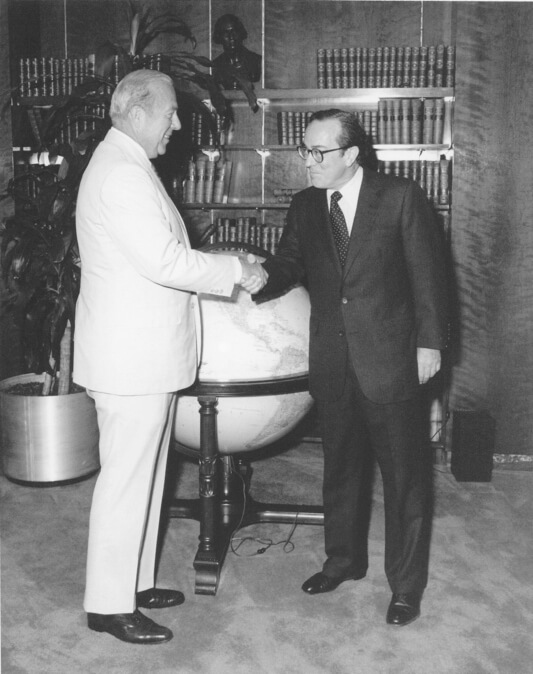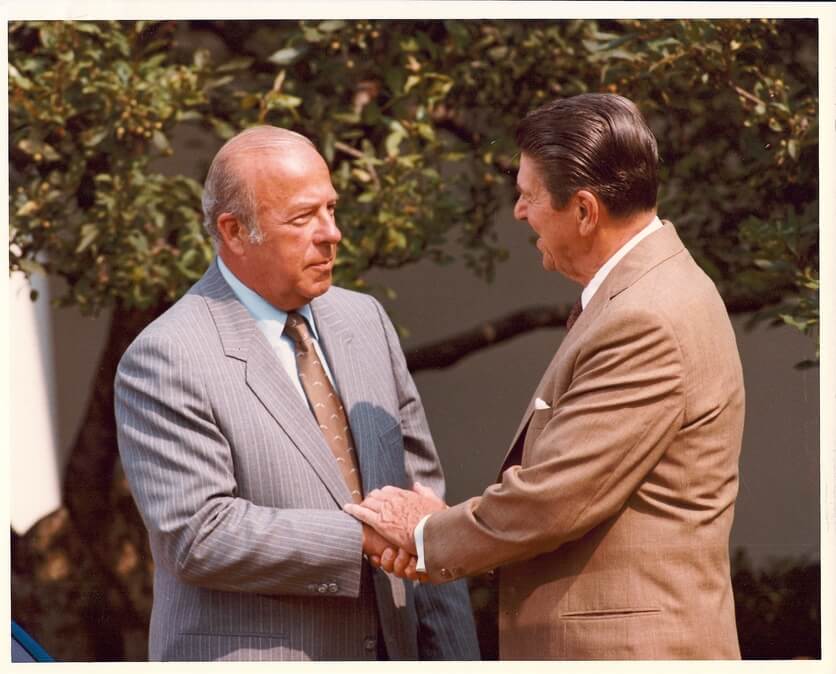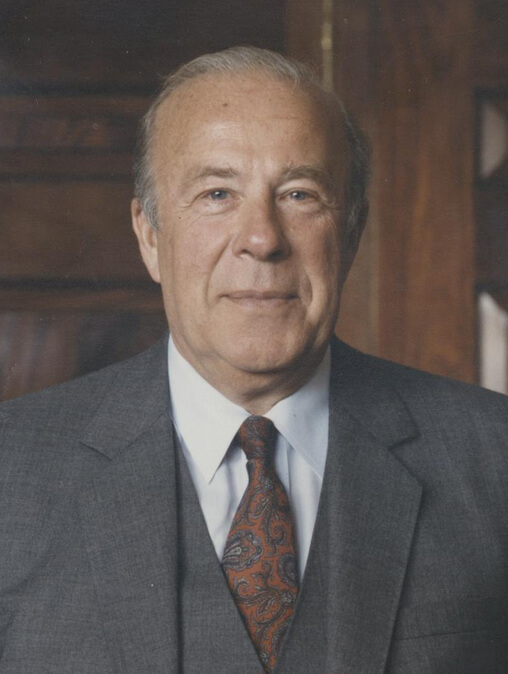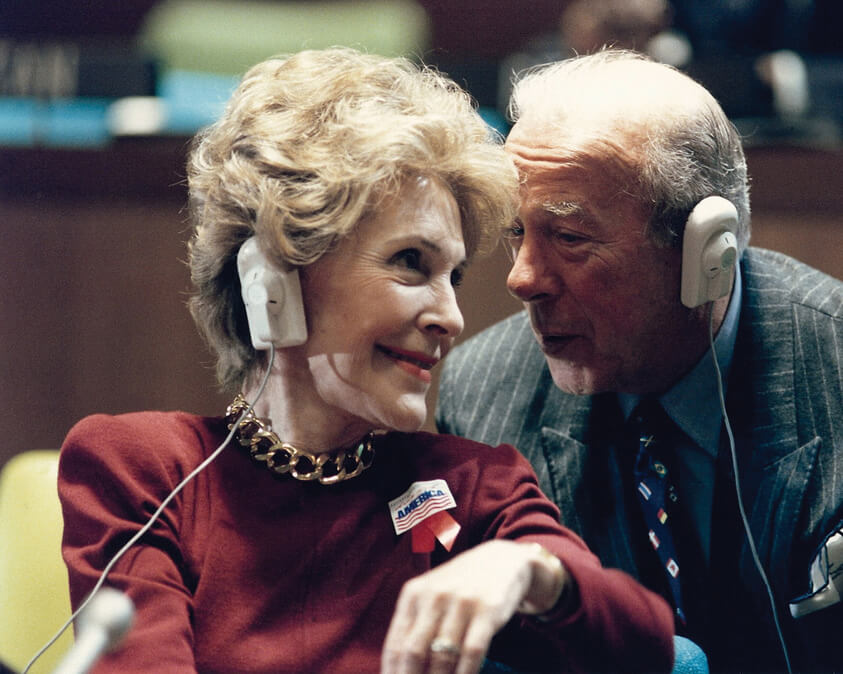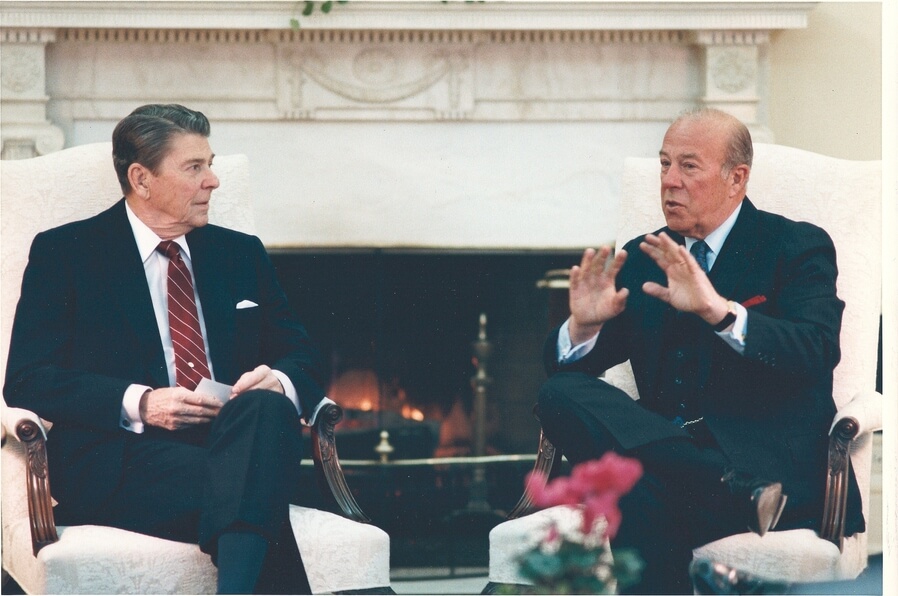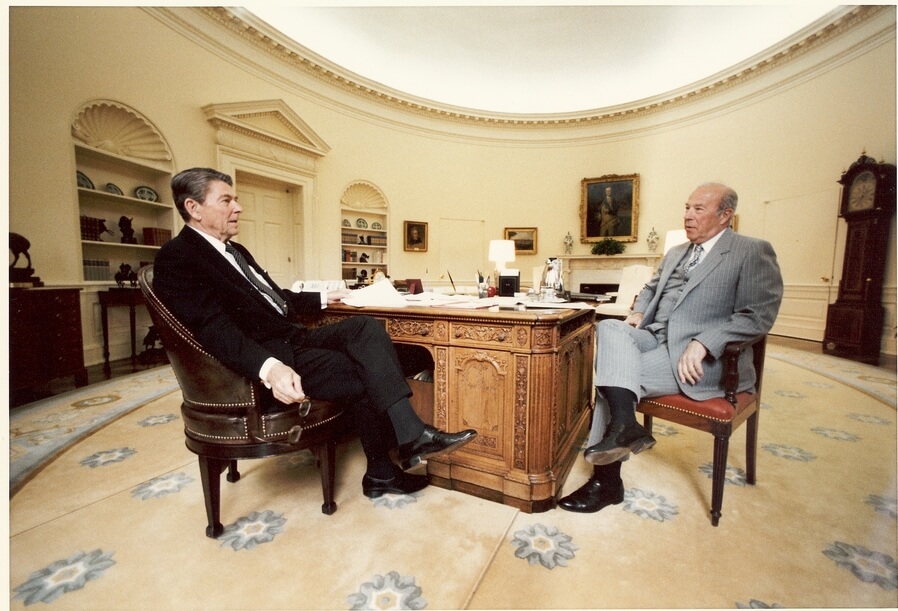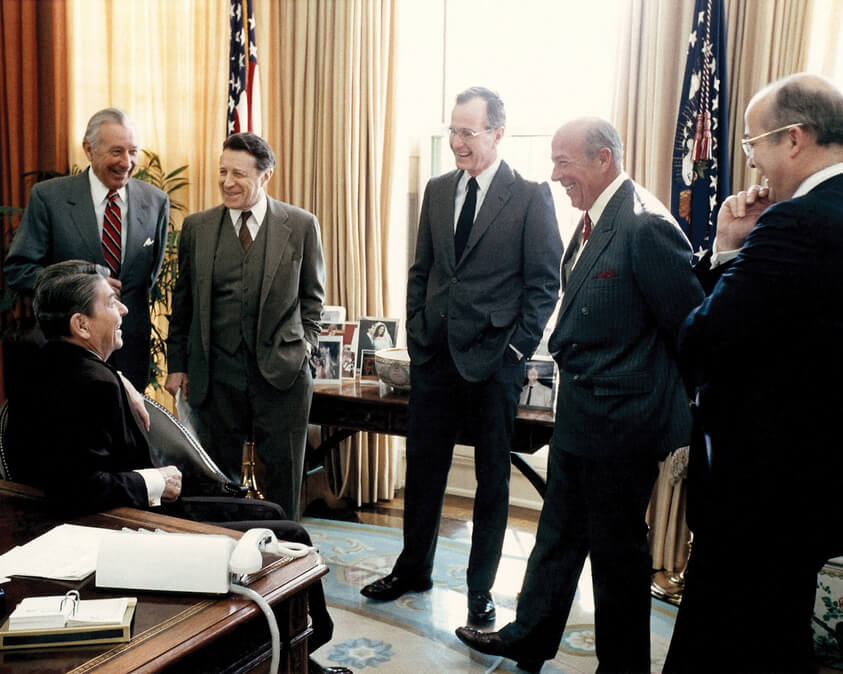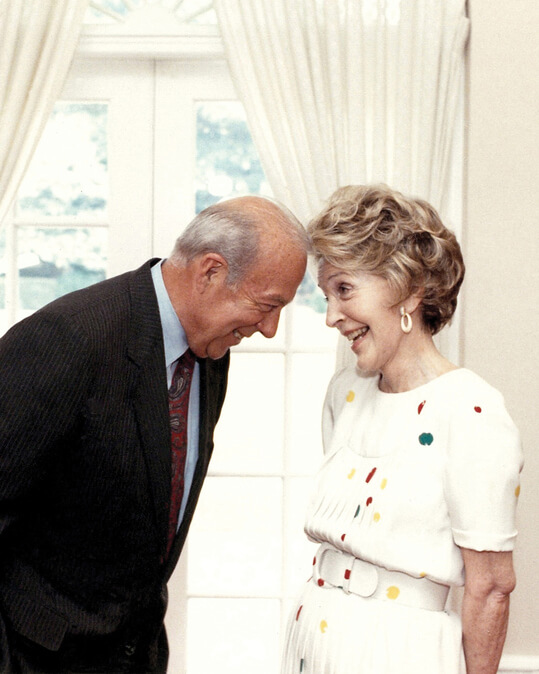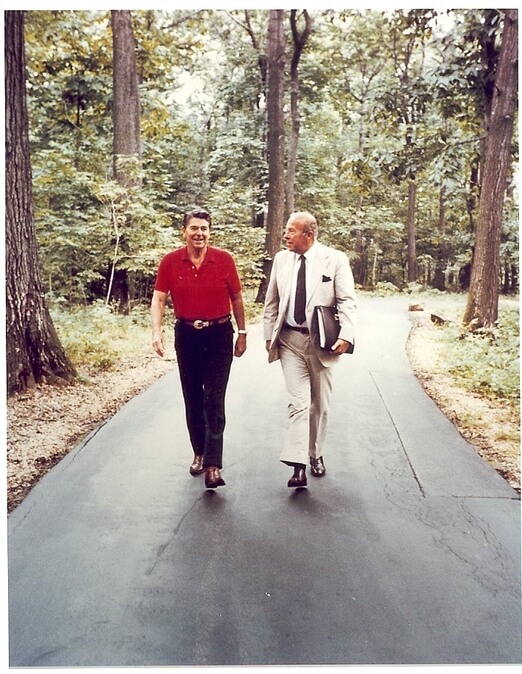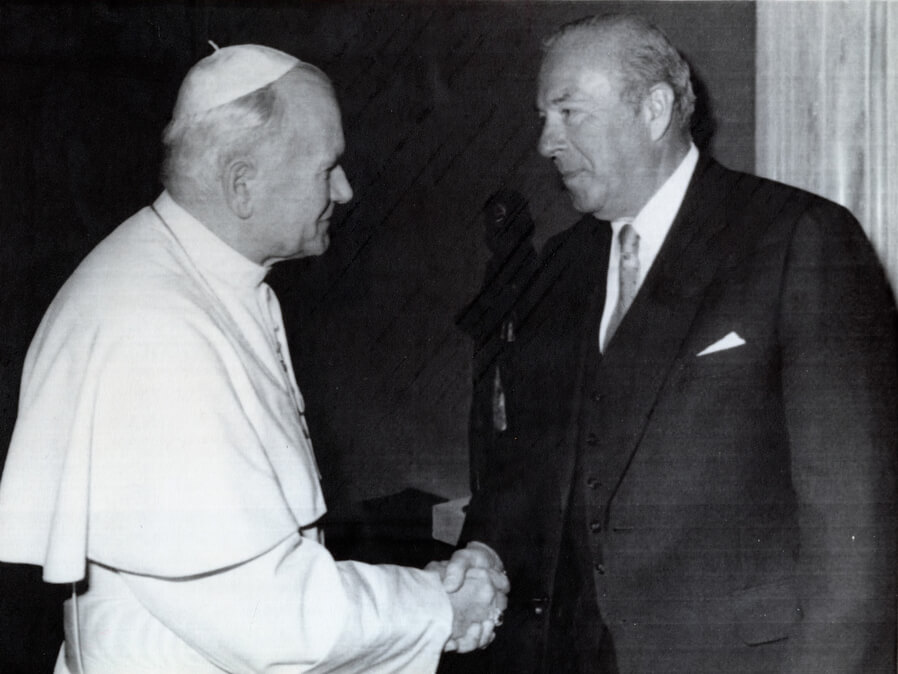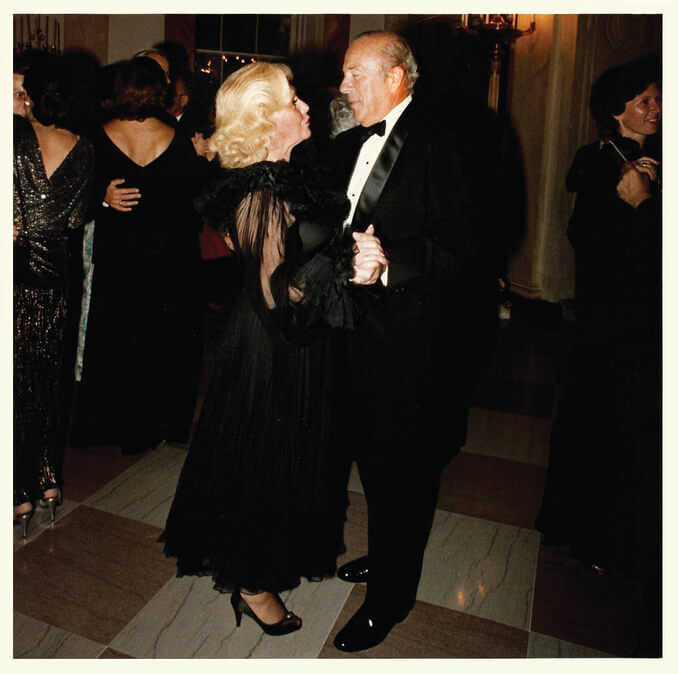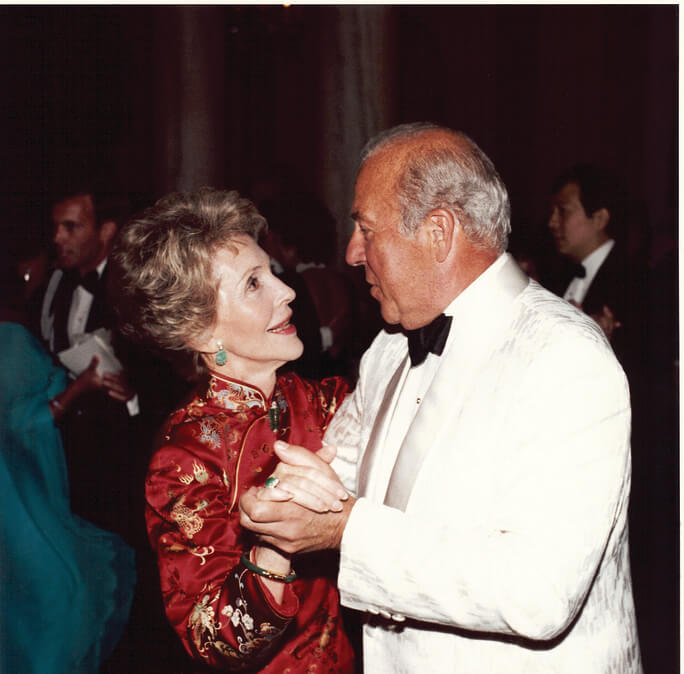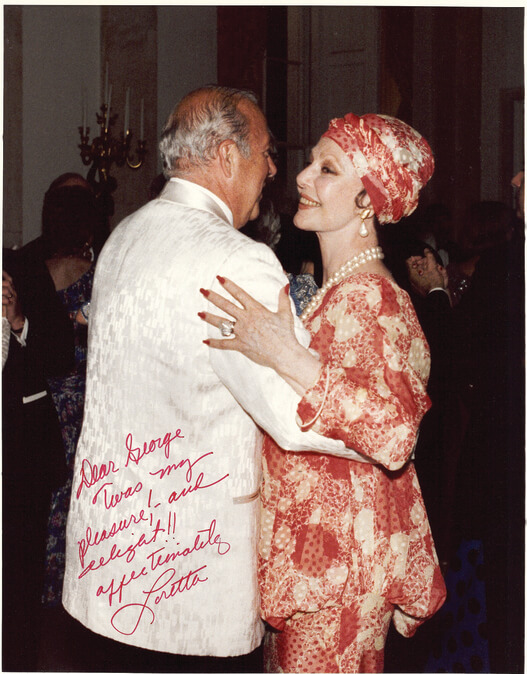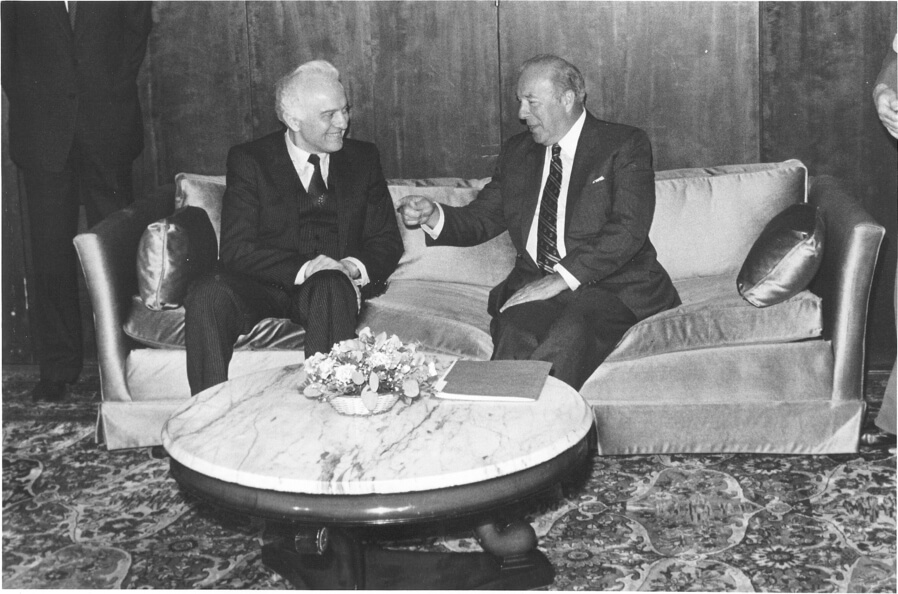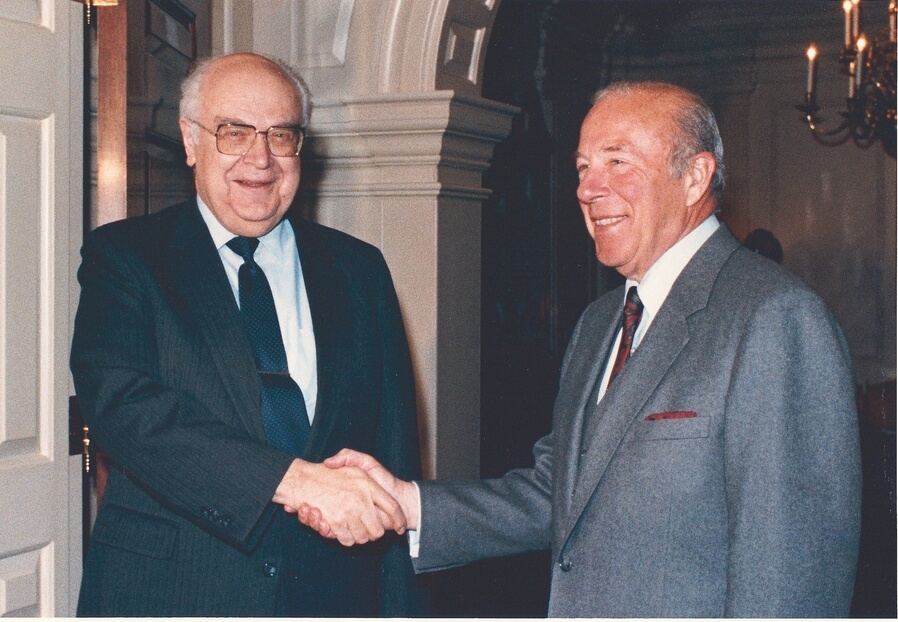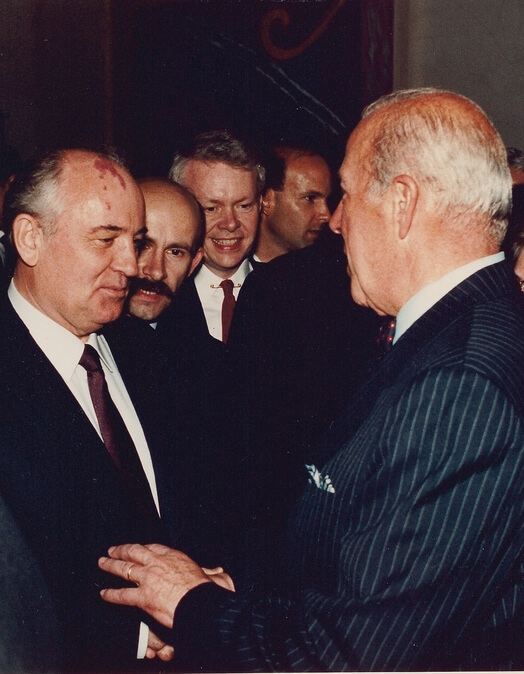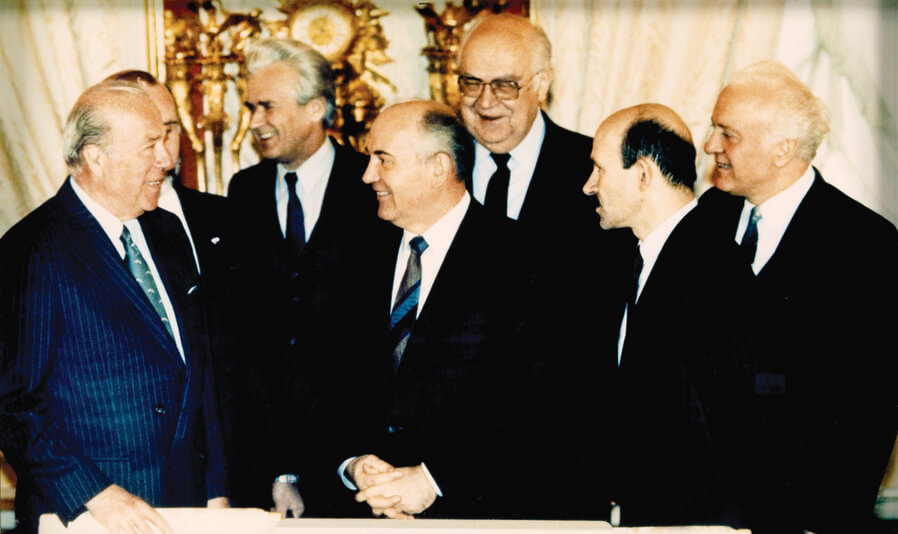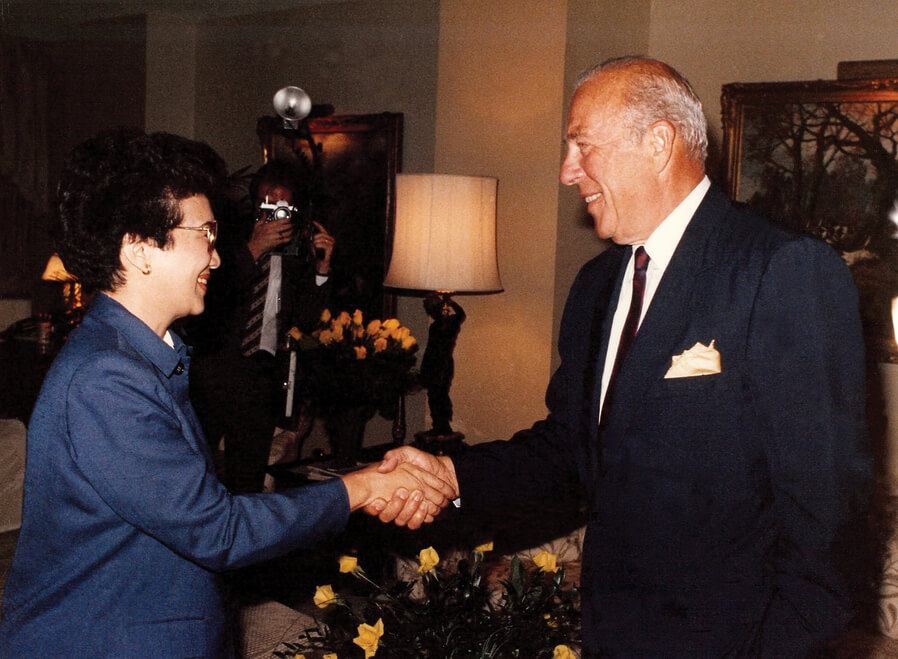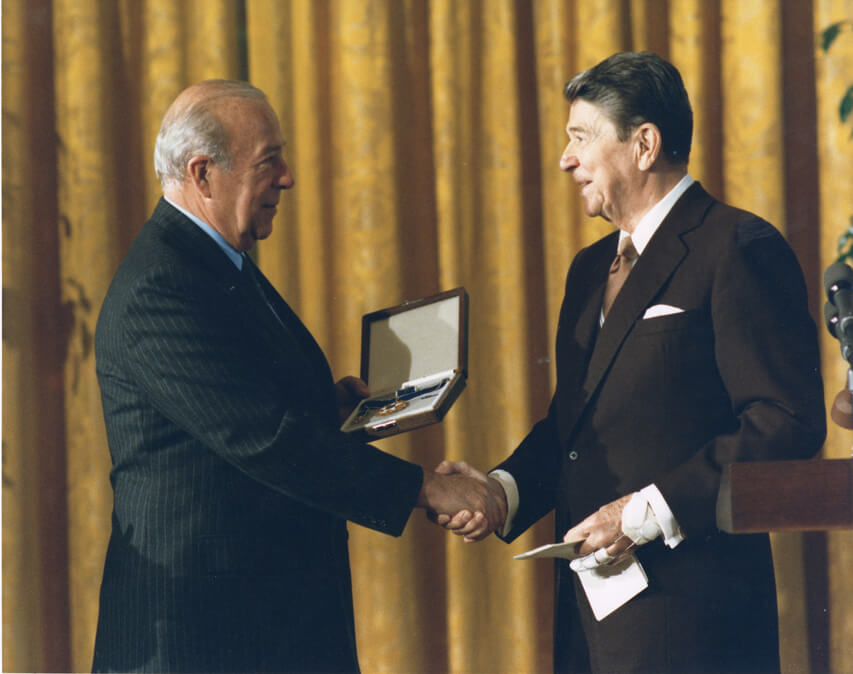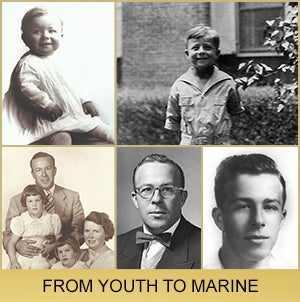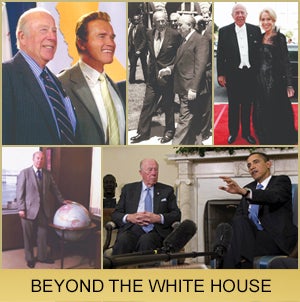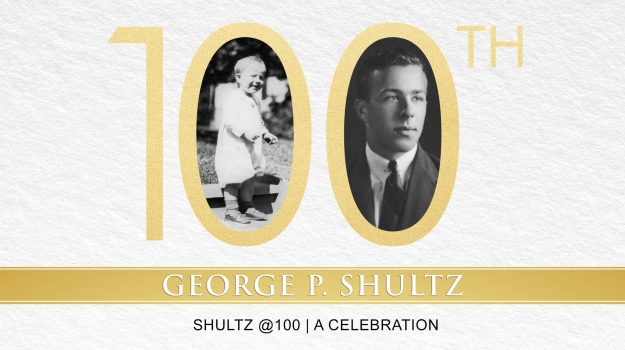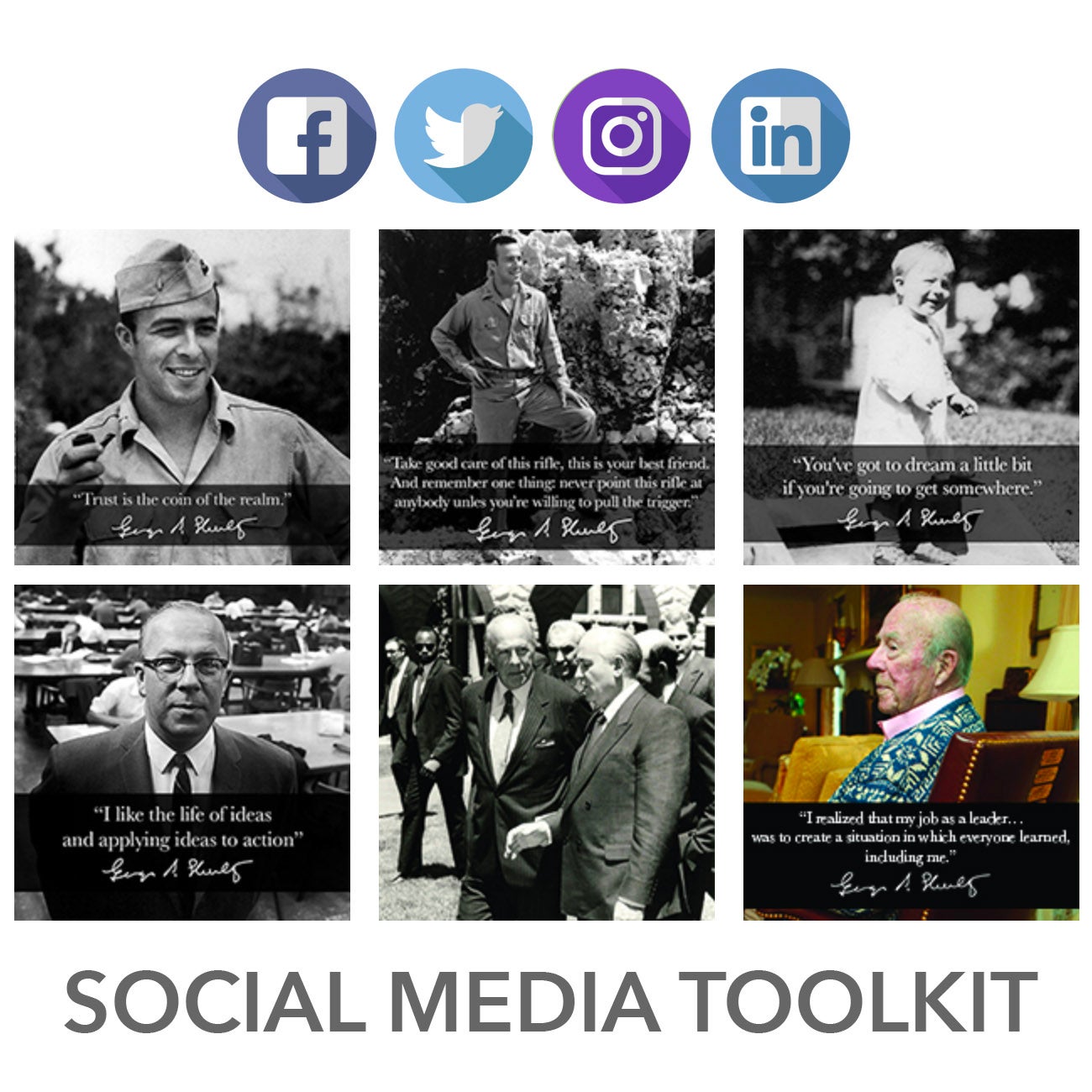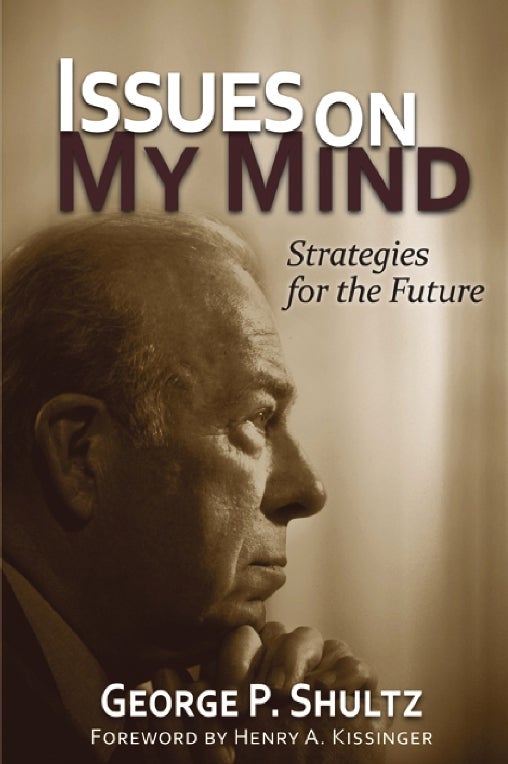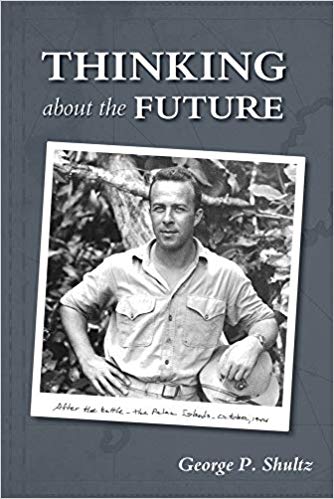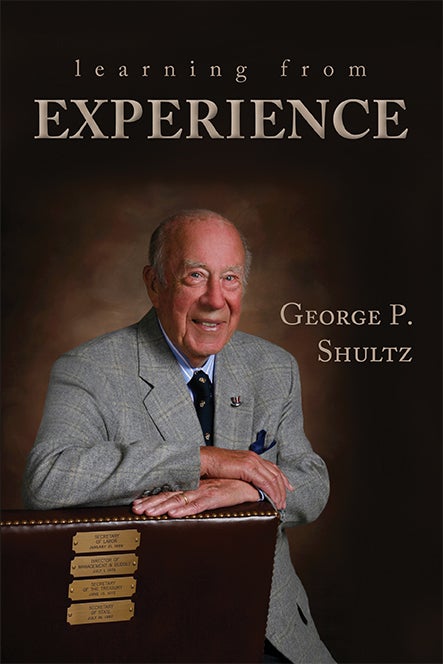
NIXON ADMINISTRATION: SECRETARY OF LABOR
39. George Shultz returned to government service when he was appointed secretary of labor by President Nixon in 1969.
40. Arthur Burns, former secretary of the Treasury, was the one who asked Shultz if he was interested in the position.
41. After his nomination for secretary of labor, George Shultz met with President Eisenhower at Walter Reed Hospital. Eisenhower advised Shultz to try to play golf twice a week to separate his mind from the day-to-day grind, or else he wouldn’t develop the perspective needed to really do his job.
42. The first major hurdle Shultz faced as secretary of labor was the Longshoremen’s Union strike. He helped settle the strike with a system of collective bargaining. He recalled: “It sent a big message that the collective bargaining system is a system where labor and management are supposed to bargain out their issues themselves and not have constant intervention from the White House.” (Nixon Library)
43. As secretary of labor, Shultz drew on his academic background to promote revenue-sharing manpower programs, reduction of poverty, and a comprehensive manpower system to integrate planning and allocation of resources.
44. Shultz provided leadership in encouraging equal employment opportunities, specifically through the “Philadelphia plan” for nondiscrimination in federal construction projects.
45. Shultz’s portrait as secretary of labor was painted by C. J. Fox.
NIXON ADMINISTRATION: OFFICE OF MANAGEMENT AND BUDGET
46. In 1970, George Shultz became the director of the Office of Management and Budget, a newly established cabinet position in the Nixon administration.
47. That year, President Nixon declared that the Brown v. Topeka Board of Education decision was “right in both constitutional and human terms” and created a process by which to carry out the court’s mandate. Vice President Spiro Agnew and Shultz were in charge of leading a cabinet committee to manage the transition to full compliance, requiring complete desegregation of the schools in seven states—Alabama, Arkansas, Georgia, Louisiana, Mississippi, North Carolina, and South Carolina.
48. Shultz conducted many White House meetings of biracial committees established in each of the seven states to be desegregated, with the goal of shifting the dialogue from one of ideology and positions, to one of creative problem-solving. His suggestion that President Nixon join in the final meeting, in New Orleans, was pivotal in creating the community buy-in to avoid violence in the new school year.

NIXON ADMINISTRATION: SECRETARY OF THE TREASURY
49. George Shultz was appointed secretary of the Treasury in 1972.
50. During his tenure as secretary of the Treasury, Shultz was concerned with two major issues: the continuing domestic administration of Nixon's “New Economic Policy,” including a system of wage and price controls which he opposed given his background in economics, and a renewed dollar crisis that broke out in February 1973.
51. During this period, Shultz also served as chairman of the Council on Economic Policy, negotiated a series of trade protocols with the Soviet Union, and represented the United States at the Tokyo meeting on the General Agreement on Tariffs and Trade.
52. He participated in an international monetary conference in Paris in 1973, which grew out of the 1971 decision to close the gold window. The conference formally abolished the fixed-rate exchange system, which was eliminated in 1971, thereby causing all currencies to float.
53. George Shultz resigned in 1973 given his disagreements on the wage and price control system, but President Nixon convinced him to remain in the job for another year managing international economic affairs, eventually leaving on May 8, 1974.
54. Shultz’s portrait as secretary of the Treasury was painted by Everett Raymond Kinstler.
55. George Shultz left the Nixon administration in 1974 and become executive vice president of the Bechtel Group. He was later its president and a director.
REAGAN ADMINISTRATION: SECRETARY OF STATE
56. George Shultz was chairman of President Reagan’s Economic Policy Advisory Board from 1981 to 1982.
57. In 1982, President Ronald Reagan selected George Shultz to replace Alexander Haig as secretary of state.
58. Upon his confirmation, Shultz inherited several foreign policy challenges, including the war in Lebanon, delicate negotiations with the People’s Republic of China and the government of Taiwan, and a ratcheting up of Cold War tensions with the Soviet Union.
59. As secretary of state, Shultz played a key role in implementing foreign policy that led to the successful conclusion of the Cold War and the development of strong relationships between the United States and the countries of the Asia-Pacific region.
60. Shultz often tells how President Reagan wanted to talk to a Communist leader to better understand the Soviet Union, so Shultz organized a meeting with Anatoly Dobrynin, the Soviet ambassador to the United States.
61. Shultz threatened to resign three times during his tenure as secretary of state, but President Reagan refused to accept his resignations.
62. Nancy Reagan would often seat Shultz, well known in the State Department for his dancing abilities, next to a Hollywood star at dinners at the White House.
63. George Shultz is one of just two Americans to have served four different cabinet positions.
NEXT FACT GALLERY: BEYOND THE WHITE HOUSE | FROM YOUTH TO MARINE








